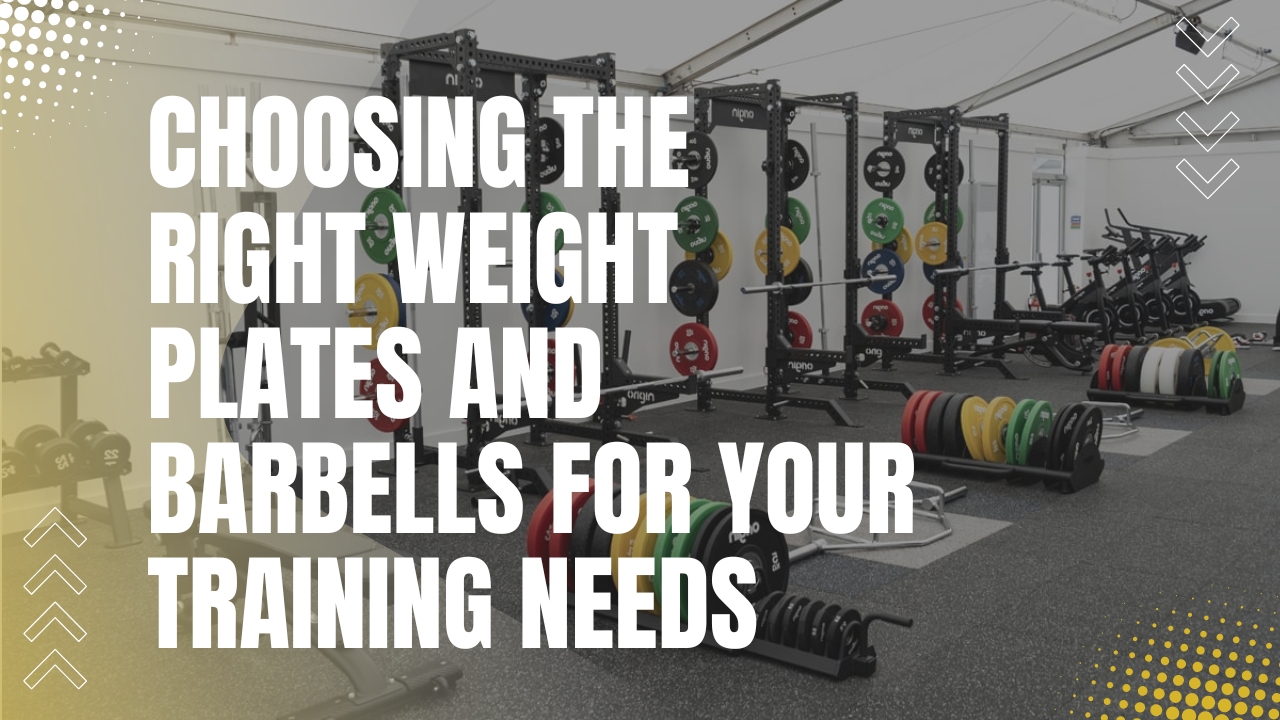- Empty cart.
- Continue Shopping
Choosing the Right Weight Plates and Barbells for Your Training Needs

Building a home gym or upgrading your workout? Weight plates and barbells are some things you must choose wisely. Both pieces of gear will immensely affect the quality of your training and help a person reach an aspired qualitative fitness level. Knowing their options helps a person both as a beginner and seasoned lifter make the necessary decisions. Here is your guide on how to choose:
Types of Weight Plates
Weight plates come in various types, each designed for specific needs. Here’s a breakdown:
- Standard Plates:
- These are versatile and fit most equipment, including a straight rod or dumbbell rod.
- They’re ideal for general fitness or smaller spaces where specialized gear isn’t necessary.
- Olympic Plates:
- These are for Olympic rods, which are bigger in diameter, at 2 inches, compared to the regular ones.
- Olympic plates are heavier and could provide stability, most especially when doing heavy lifts or even powerlifting.
- Bumper Plates:
- Bumper plates are made from rubber and are best for activities like CrossFit or weightlifting.
- They’re designed to absorb the impact, saving your floor when you drop the barbell.
When deciding, think about the type of rod you have—standard, Olympic rod, or straight rod—and how you’ll use the plates. A mix of standard and bumper plates works well for general gym setups.
Selecting the Right Barbells
A barbell is more than just a long piece of metal. Different types suit different workouts. Here are the key types:
- Standard Barbells:
- These are smaller and lighter, typically supporting standard gym weight plates.
- They’re ideal for beginners or lighter exercises.
- Olympic Barbells:
- Designed to handle heavier weights, they’re larger and sturdier.
- They’re compatible with Olympic plates, making them great for advanced training.
- Specialty Barbells:
- These include curved or hex bars, offering more ergonomic options for specific movements.
- If you want something specific for deadlifts or shoulder presses, consider specialty barbells.
Choosing the right barbell depends on your goals. For strength training, an Olympic rod is the gold standard. For general fitness or lighter routines, a standard barbell will suffice.
Key Considerations for Weight Plates and Barbells
When buying weight plates and barbells, consider these factors:
- Durability:
- Look for high-quality materials like cast iron or steel.
- Rubber-coated plates last longer and protect floors.
- Compatibility:
- Ensure your gym weight plates match the size of your barbell. For example, an Olympic barbell requires 2-inch diameter plates.
- Grip Design:
- Some weight plates have handles or grips, making them easier to pick up and use for exercises without a barbell.
- Weight Range:
- Invest in a variety of weights. A set with lighter plates (5 kg, 10 kg) and heavier ones (20 kg) will give you flexibility.
Why the Right Equipment Matters
Using the right weight plates and barbells impacts your training experience. Proper equipment ensures safety, efficiency, and progress. For example:
- Well, if your barbell is not rated for the weight you lift, then it may bend or even break.
- Unmatching plates result in uneven lifts and can cause injury.
- Well-constructed, durable equipment saves money in the long run.
Incorporating Dumbbell Rods and Straight Rods
If you’re short on space, dumbbell rods are a great alternative. They allow you to use smaller weights for exercises that don’t require a barbell. Similarly, a straight rod is versatile and perfect for beginner-friendly moves like curls, rows, and presses. Both are affordable options for building strength without needing a full barbell setup.
Building a Balanced Setup
To create an effective workout space, mix and match equipment based on your goals. A basic setup might include:
- A sturdy barbell (standard or Olympic).
- A variety of gym weight plates.
- A pair of dumbbell rods for lighter exercises.
As your strength improves, add additional weight plates or use specialty barbells.
Conclusion
Choosing appropriate weight plates and barbells is essential for designing a routine for one’s self. This thought alone considers the type of equipment, the exercises one intends to perform, and the space where one is good for you. Be it an Olympic rod for heavy squats or a dumbbell rod that people generally use while working out at home, investing once in good equipment pays in the long run.
And remember, your training tools should grow with you. Start with what you need now and expand your collection as your goals evolve. Happy lifting!







